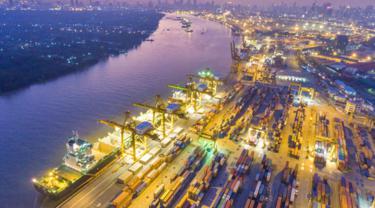The Southeast Asian market is brimming with opportunities for Canadian exporters, says Klaus Houben, Chief Representative for Southeast Asia at Export Development Canada (EDC).
For EDC, the priority markets in the region include Singapore, Malaysia, Indonesia, Philippines, Thailand and Vietnam, and this region overall has many opportunities for Canadians, particularly in infrastructure.
EDC has declared Southeast Asia to be a high-priority strategic region, because economic growth and development are expected to exceed the global average for the next several years.
Where are the opportunities?
“There’s an ongoing need in all these markets in infrastructure,” Houben said, and added that it is expected to reach $1.5 trillion annually.
Power, which includes gas-fired power plants, as well as renewables, is one big area of need. And while coal is a prominent power element, EDC no longer supports projects involving coal because of its environmental implications. Nevertheless, these countries do tend to have large coal reserves, Houben said.
Still, there are many other renewable energy opportunities, Houben said, specifically mentioning that smart grids and smart meters are of interest. Singapore wants to become a smart city, so there might be opportunities for Canadians there, too, he said.
The other markets — Vietnam, Malaysia, Thailand, Indonesia and the Philippines — all have some basic needs outside of power as well. Those include other infrastructure and information and communication technology (ICT).
“As we are looking in Europe for 5G, they are looking for 4G on the mobile side,” Houben said. “ICT and related infrastructure are definitely needed.”
While the infrastructure needs in these other markets are dominated by power, Houben said there are also other areas.
“There’s a lot of basic infrastructure in transportation,” Houben said. “We see a lot of roads being built, airports being extended or built and also railways and bridges.”
Matching needs to Canadian excellence
Those projects require engineering services, a field in which Canadians excel. The Philippines is also looking into LNG facilities as well.
When it comes to natural resources, these countries do have some. For example, Houben said, they have mining projects — another area of Canadian excellence. EDC was recently asked to look into a copper smelter project in Indonesia.
“Some Canadian engineering companies are already engaged in that,” Houben said.
Navigating challenges
He said the market is a little bit challenging because there are sometimes human rights issue, and there can also be corruption, so Canadians would be wise to watch for and mitigate risk. Some of the conglomerates are state-owned enterprises, but “even then, you might see CSR issues,” Houben said. “It’s getting better, but there are still some issues.”
Singapore as the hub
On the opportunity front, Houben singled out Singapore as not only a financial hub for the region but also the logistics hub, and added that it’s generally far more developed than the other nations in the region.
Singapore wants to play a role in China’s ambitious Belt and Road Initiative. Often called the 21st-century Maritime Silk Road, the project involves six corridors, one of which runs from southern China to Singapore, with another running from the Chinese coast through Singapore to the Mediterranean.
As such, Singapore wants to be the definitive hub for southeast Asia, a title with which it is often credited already. The country is expanding its port and airport capacity so it can cement the title for that region.
Singapore is putting on a big push to become independent from Malaysia, its current source for drinking water, by 2060, so it is rapidly expanding its desalination plants. Canadians will therefore find opportunities in this field, Houben said.
“We recently had a water mission to Singapore and Indonesia,” he said. “The companies involved were working both in drinking water and also in wastewater management.”
Singapore also has an active oil and gas industry.
“It may not be as much of a priority at the moment because of the prices, but there are still opportunities in oil and gas,” he said.
Finally, Singapore’s opportunities are to be found in the financial sector, specifically for Canadians to collaborate with Singapore’s strong banking sector.
Perspectives from a former diplomat
Asked for his take on opportunities across Southeast Asia, Omar Allam, CEO and founder of Allam Advisory Group, said there are major business opportunities in aerospace, defence and security across multiple markets.
“There’s also transportation, that then dovetails into infrastructure and logistics,” he said, and added that are also agriculture and healthcare technology and infrastructure opportunities.
“It’s a long shopping list of countries, but if you’re breaking it down by sector, there are opportunities and active interest from those countries to use global suppliers in those sectors and Canada is a suitable partner,” he said. “When it comes to defence and security, certain countries are looking at maritime surveillance solutions so they can patrol their waters, protect their economic zone and participate in search-and-rescue operations.





